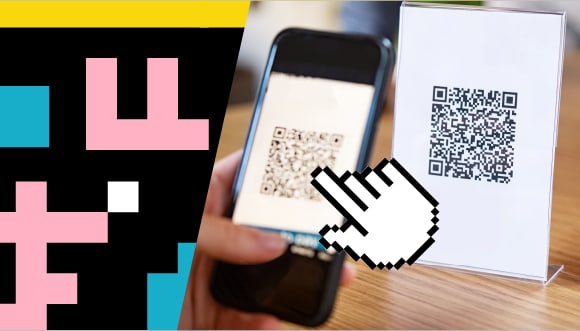How to use QR codes safely
Quick response codes, commonly known as QR codes, can be found almost anywhere and on almost anything these days. Sometimes on a menu, in schools, in malls and even on fresh produce! QR codes have become more popular because they offer a quick and contactless way to find information. These codes are an encrypted form of technology with many different purposes. With the increase in the use of QR codes, it is important to know what risks they come with.

What is a QR code?
QR codes are small white squares with two dimensional (2D) black markings. The markings within the squares are different with every code. Anyone can create a QR code for any source by using the tools in their browser. Digital devices, such as smartphones, are used to scan QR codes with their camera to direct you to information available online QR codes became more popular and more widely used during the COVID-19 pandemic to offer touchless transactions.
QR codes can be used for many different actions, such as:
- Opening a website
- Joining a Wi-Fi network
- Sending an email or message
- Adding a contact
- Downloading apps
- Displaying or verifying information
What are the risks?
Though convenient, there are risks with using QR codes since they often contain or request personal information. Examples of QR codes that contain personal information include vaccination records and admission tickets for an event. QR codes requesting personal information are used as a fast resource to scan and fill out to track or confirm your identity. Cyber criminals also use QR codes as a form of phishing by creating malicious codes and sharing them in the online and physical world. These malicious codes can lead you to links used to steal your personal information and infect your device with malware. It is important to be aware that cyber criminals can use physical stickers of QR codes to replace a verified code or compromise the webpage a verified code leads to.
How do I safely use QR codes?
It’s important to consider where you are seeing and scanning a QR code. If you are unsure of the legitimacy of a code, it’s best to not scan it. Here are few suggestions you can use to stay safe.
- Keep your personalized QR codes (e.g. proof of vaccination, boarding pass) in a secure folder on your device
- Download apps from verified app stores instead of getting them through QR codes
- Do not make financial payments through QR codes
- Check for tampered QR codes (stickers) and compromised webpages (requesting unnecessary personal information)
- Provide the minimum amount of personal information requested when completing online forms through QR codes
- Report any incidents of suspected fraud and cyber crime to your local police and the Canadian Anti-Fraud Centre
Conclusion
With technology constantly evolving, don’t forget the importance of being cyber secure. The best way to protect yourself is to always trust your instinct and be cautious before scanning a QR code. Cyber criminals are always finding new ways to take advantage of new technology but by being aware of the risks with QR codes, you can learn how to stay cyber safe.